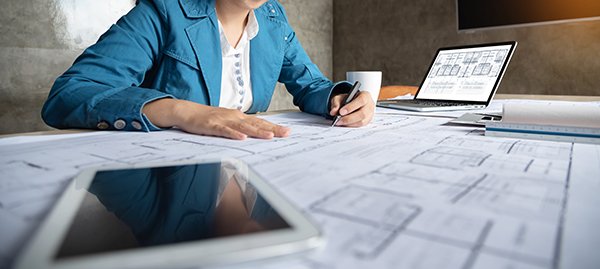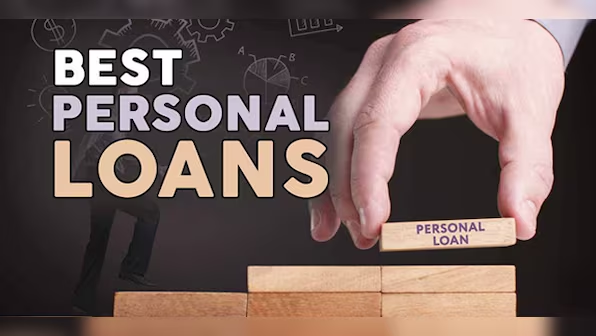When you’re running a business, one of the most significant investments you’ll ever make is in real estate. Whether you’re purchasing a new building, expanding your office space, or refinancing an existing property, having the right financing in place can make all the difference. One option many business owners consider is an owner-occupied business loan.
Owner-occupied business loans are designed specifically for business owners who plan to occupy the property they are purchasing or refinancing. This type of financing comes with several benefits, including lower interest rates and more favorable terms compared to non-owner-occupied property loans.
In this blog, we’ll dive into what owner-occupied business loans are, how they work, the benefits they offer, and the application process.
What is an Owner-Occupied Business Loan?
An owner-occupied business loan is a type of commercial real estate loan where the business owner is required to occupy at least 51% of the property. This type of loan is typically used when the business owner plans to buy or refinance a property that will be used for business operations, such as an office building, retail space, or warehouse.
The property purchased or refinanced with this loan serves as both the business’s headquarters and the owner’s place of business. This contrasts with non-owner-occupied business loans, where the property is leased out to tenants or used for investment purposes, rather than being used directly by the business owner.
In the case of an owner-occupied loan, lenders generally view the loan as less risky because the business owner has a direct stake in the property’s success. In addition, these loans often come with lower down payments, longer repayment terms, and more competitive interest rates than non-owner-occupied business loans.
Types of Owner-Occupied Business Loans
There are several types of owner-occupied business loans available, each designed to meet the different needs of business owners. Here are the most common types:
1. SBA 504 Loan
The SBA 504 Loan is a government-backed loan that is specifically designed for owner-occupied real estate purchases. The loan is typically used for the purchase of buildings, land, or equipment. The key benefits of SBA 504 loans include:
- Low down payment: Typically 10% or less, making it an attractive option for small business owners.
- Long repayment terms: Up to 25 years for real estate, allowing business owners to spread out the payments.
- Competitive interest rates: SBA loans often offer lower interest rates than conventional loans.
- Fixed rates: The SBA 504 loan features a fixed interest rate, making monthly payments predictable.
However, there are eligibility requirements to qualify for this loan, such as having a strong credit score and a demonstrated ability to repay the loan.
2. SBA 7(a) Loan
The SBA 7(a) Loan is another popular financing option for owner-occupied properties. It is a versatile loan that can be used for various purposes, including buying or refinancing real estate. Key features of SBA 7(a) loans include:
- Flexible loan amounts: SBA 7(a) loans can go up to $5 million.
- Lower down payments: Typically 10-20%.
- Long repayment terms: Up to 25 years for real estate.
- Relatively low interest rates: SBA 7(a) loans typically have lower rates than conventional loans.
This loan also offers flexibility in the use of the funds, making it an excellent choice for owners who might need to purchase real estate, buy equipment, or finance working capital.
3. Conventional Loans
Conventional loans are offered by banks and traditional lenders and are often the simplest and quickest option for owner-occupied business loans. Unlike SBA loans, conventional loans are not government-backed, which means they might come with stricter qualification requirements. Key features of conventional loans include:
- Faster approval: Because they don’t involve the government, conventional loans can be processed more quickly than SBA loans.
- Higher interest rates: Conventional loans typically have higher interest rates than SBA loans.
- Stricter qualification requirements: Lenders may require a higher credit score, larger down payments, and proven business financial stability.
Conventional loans are a good option for businesses that need financing quickly and can meet the stricter qualification criteria.
4. Commercial Mortgage Loans
A commercial mortgage loan is a real estate loan that is specifically used to finance the purchase of commercial property. This type of loan is ideal for owners of small businesses who plan to occupy the property. Commercial mortgage loans offer longer repayment terms and relatively low interest rates compared to other types of loans.
However, these loans often require more substantial down payments and may require you to put the property up as collateral.
Benefits of an Owner-Occupied Business Loan
Opting for an owner-occupied business loan has many advantages, both for the business owner and the lender. Here are some of the key benefits:
1. Lower Interest Rates
Owner-occupied business loans generally come with lower interest rates than loans for non-owner-occupied properties. Since the lender perceives these loans as less risky (due to the business owner’s direct involvement in the property’s success), they offer better terms to borrowers.
2. Lower Down Payments
Owner-occupied loans often require smaller down payments than non-owner-occupied loans. This can make it easier for business owners to secure financing without draining their business’s cash reserves.
3. Longer Repayment Terms
Owner-occupied loans tend to offer longer repayment terms (up to 25 years) than other commercial loans, which can help reduce monthly payments and ease cash flow management.
4. Equity Building
By purchasing real estate for your business, you’re building equity over time rather than paying rent. This can be a smart investment in the long run, as the value of the property may increase over time, benefiting your business’s financial health.
5. Tax Benefits
Business owners may be eligible for tax deductions on mortgage interest, property taxes, and other related expenses, making the purchase of owner-occupied property more financially appealing.
Qualifying for an Owner-Occupied Business Loan
To qualify for an owner-occupied business loan, you’ll need to meet certain requirements set by the lender. Some of the common qualifications include:
- Business History: Lenders typically prefer businesses that have been operating for at least two years.
- Credit Score: A strong credit score (typically 680 or higher) is important to securing favorable loan terms.
- Down Payment: Expect to provide a down payment of 10-20%, depending on the loan type and your financial situation.
- Debt Service Coverage Ratio (DSCR): Lenders will assess your ability to repay the loan by looking at your business’s cash flow and financial stability.
The Application Process
The application process for an owner-occupied business loan can vary depending on the lender and the type of loan. However, the general steps are as follows:
- Prepare Your Financial Documents: Lenders will need to review your financial statements, tax returns, and other business documents to assess your eligibility.
- Choose the Right Loan Type: Depending on your business’s needs, select the loan that works best for you (SBA, conventional, or commercial mortgage).
- Submit the Application: Fill out the loan application and submit the required documentation.
- Wait for Approval: Lenders will evaluate your application, and if approved, you’ll be given loan terms.
- Close the Loan: Once approved, you’ll sign the loan documents and close the deal.
FAQ – Owner-Occupied Business Loan
1. What does owner-occupied mean in a business loan?
An owner-occupied business loan is a loan used to purchase or refinance a commercial property that will be primarily occupied by the business owner for their operations.
2. How much can I borrow with an owner-occupied business loan?
The loan amount varies depending on the type of loan, your financial stability, and the lender’s terms. SBA loans, for example, can go up to $5 million.
3. What are the interest rates for owner-occupied business loans?
Interest rates can vary based on the loan type and your financial profile, but they are typically lower for owner-occupied loans compared to non-owner-occupied loans.
4. Can I use an owner-occupied business loan for property improvements?
Yes, many owner-occupied business loans can be used for purchasing property, making improvements, or refinancing existing commercial real estate.
5. What are the qualification requirements for an owner-occupied business loan?
Generally, you’ll need a strong credit score (usually 680+), a stable business history (typically 2 years), and a reasonable down payment (typically 10-20%).
6. Can I apply for an owner-occupied loan if my business is new?
It can be more difficult to qualify for an owner-occupied loan if your business is less than two years old, but it is not impossible. You may need to provide additional documentation and have a personal guarantee.
An owner-occupied business loan can be a great way to finance the purchase or refinancing of commercial real estate for your business. By offering lower interest rates, smaller down payments, and longer repayment terms, this type of loan helps business owners build equity, reduce expenses, and enhance long-term financial stability.
Whether you’re a small business owner looking to buy your first commercial property or you’re expanding your existing operations, an owner-occupied business loan can provide the flexibility and financial support you need to take the next step in your business journey.
If you’re considering applying for this type of loan, make sure to consult with a financial advisor and lender to determine the best loan option for your specific needs.




